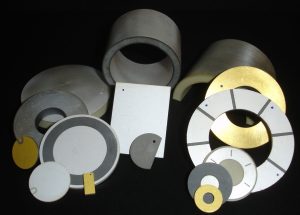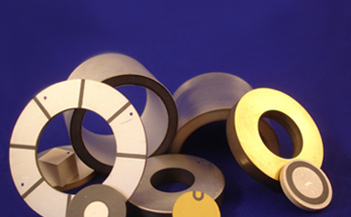The solid electrode pattern is the most common or “standard” electrode pattern that is applied to piezoelectric ceramics manufactured by American Piezo. APC’s solid electrode pattern is applied using a silk screening process to the positive and negative surfaces of the ceramic. The entire ceramic is then polarized to give it its piezoelectric properties. The solid electrode pattern is the most cost effective pattern to be manufactured and therefore results in a less expensive piezoelectric ceramic for the end customer.




